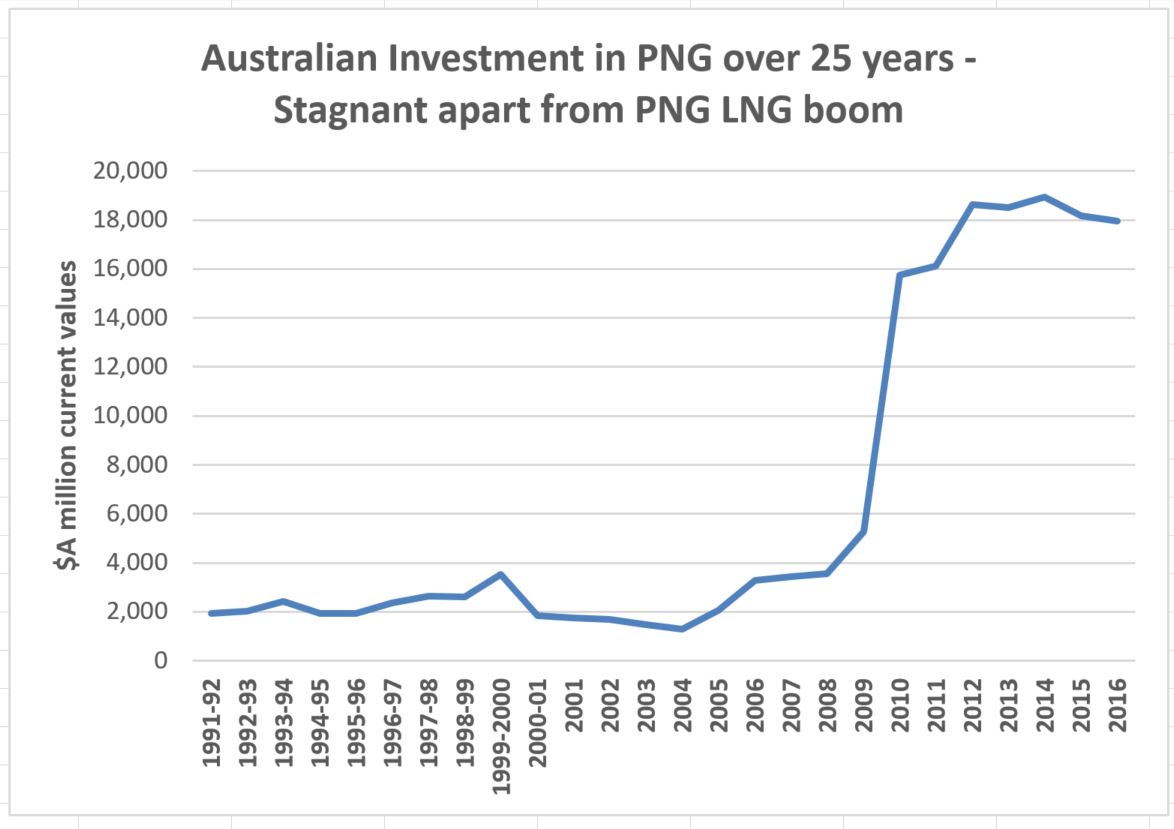PNG’s Supplementary Budget is due out this week.
This will be a key document for re-building investor confidence in PNG. Can it demonstrate the resilience of the great SP PNG Hunters win on Sunday?
There has been some encouraging news over the last few weeks from the new Treasurer Charles Abel. This has included a commitment to better processes of consultation (including with Opposition Governors), better transparency (release of the preliminary IMF Article IV assessment), the sale of the Oil Search shares (what an awful initial mistake) and an indication of a willingness to cut electoral funds (the PSIP and DSIP).
The PNG Business Advantage Investment Conference in Sydney on 7-8 September was also an opportunity to build investor confidence in PNG. How did it do?
In an earlier article – see here – I suggested three key questions for potential investors. Following the conference, here are my impressions of the answers for at least some attendees (taken in reverse order to the initial questions).
PNG’s Business Stance
First, there was a strong sense that the new government was taking a much more pro-business stance than its predecessor. This was clearly more inclusive of the non-resource sector including agriculture, tourism and other investment options.
Frankly, I was very pleasantly surprised by Planning Minister Maru’s presentation. He stated the new government’s first priority was economic growth, and that the government recognised that it needed the private sector to help generate this growth. Probably too much emphasis on import replacement relative to export opportunities but overall the messaging was very good. However, there is a need for better information to be provided to such leaders as current figures being quoted are simply inaccurate (such as a greatly exaggerated level of rice imports).
The Governor of the central bank was less impressive – the objectives of higher and more diversified growth are commendable. However, there was no indication of any action to address a major barrier to growth caused by fixing the exchange rate at too high a level. The central bank has the simplest lever to help rebuild confidence in the economy but it is failing to use it. Rebuilding confidence and helping growth would be greatly assisted by moving to a more competitive exchange rate and freeing foreign exchange restrictions – see here. And the Governor’s focus was on import replacement rather than an export orientation. PNG’s long-term potential needs more of an outward orientation to the possibilities of the Indo-Pacific region. And this means thinking about exports even more than import replacement.
The panels from businesses operating in PNG were generally reassuring especially over the medium-term. There is nothing to match the views of those with skin in the game. There were also practical panels on the legal obligations for investors as well as pragmatic issues such as dealing with health challenges.
Money in, money out?
Second, there is no doubt that a very major challenge facing existing businesses in PNG is that they cannot get their money out.
This is a major concern for any new investors. Why invest and create jobs if they cannot actually get a fair share of their returns? Indeed, they probably feel like many landowner groups around the PNG LNG project!
The inability for businesses to get their money out is leading to many distortions in the economy. Ironically, this has some bonuses for the government as it encourages businesses to park their money in government securities while waiting.
So what are my peers doing?
This was probably the most depressing element of the conference. Not so much in what was said, but in actions on the ground. There were only about 200 people at the conference. Even though attendance was at senior levels, one would have hoped for many more.
My last article highlighted that Australian foreign investment was actually flowing out of PNG (see graph below and the downwards dip in recent years).

When looking at government portals to encourage investment in PNG, such as the Investment Promotion Authority, it is a concern that economic and investment information hasn’t been updated over the last few years and that the once commendable on-line registration processes are currently off-line (apparently related to power shortages).
There would seem to be possible easy fixes to improve the way PNG presents itself to investor peers. It is still not clear to me why there was a second PNG investment conference held in Brisbane in August. A more unified approach would be helpful, along with some additional assistance to the Investment Promotion Authority.
There was a fascinating session on other investment possibilities in the Pacific. The Fiji presentation was particularly notable in that it seemed to have very few of the major challenges facing PNG. However, as noted by businesses that were operating in both PNG and Fiji, the advantage of PNG were the potential upsides of a much, much larger market (some eight million people in PNG vs just under one million in Fiji).
Conclusion
Overall, the new government still has some way to convince new investors that the medium to longer-term opportunities in PNG are worth the risks demonstrated over the last few years.
There are some very positive noises from the new government including from the new Treasurer and the new Planning Minister. But the central bank could be doing much more to promote investment and growth by correcting the current foolish exchange rate policy.
The 2017 Supplementary Budget, and more importantly the 2018 Budget itself due in November, will more clearly demonstrate whether investors can be confident that PNG has a credible path out of the current mess.
Consistent messaging between the Treasurer and PM will be important, as will be transparency on the real state of government finances (including SOEs such as Kumul Petroleum and the real costs of the Oil Search share purchase).
May economic policy over the next few months do as well as the SP PNG Hunters.

